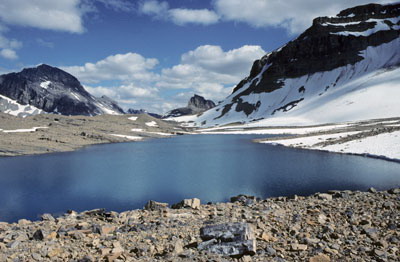
(Xinhua) — For Parks Canada, its expansion is a never-ending process.
This year Canada’s national park system, which oversees 43 national parks and 167 national historic sites, acquired Sable Island, 175 km southeast of the Nova Scotia coast, which is as famous for its shipwreck graveyard as it is for its wild horses.
Earlier this month, a new 2.5 million Canadian dollar (about 2.45 million U.S. dollars) visitor center was debuted at the childhood home of Anti-Japan War hero Dr. Norman Bethune in Gravenhurst, Ontario, and is expected to attract over 10,000 visitors annually.
A major project now in the planning for Parks Canada, the oldest national parks system in the world at 101 years, is the creation of Rouge Valley Urban Park.
With the Canadian government committing 143.7 million U.S. dollars to the project over 10 years, the nearly 50-square-kilometer green land east of Toronto will be the country’s first urban national park.
Ed Jager, director of Visitor Experience of Parks Canada, said land acquisition was just a start of the project and once completed, it would be 15 times larger than New York City’s Central Park.
Rouge Park borders cities of Toronto and Markham to the west and Pickering to the east and will extend as far south as the Lake Ontario shoreline.
“That’s just an incredible opportunity for people in Toronto, as about 20 percent of Canada’s population will now live within a bus or train ride of a national park,” said Jager.
“Rouge Valley will be 49 square kilometers approximately of amazing protected landscape in one of the busiest cities in the world,” he said.

Rouge Park will be one of the smallest in Parks Canada that covers about 300,000 square kilometers of land, and an additional 14,856 square kilometers of marine conservation areas on Canada’s three coasts.
While Ontario’s Georgian Bay Islands National Park is the smallest in the system at 14 square kilometers, the largest, Wood Buffalo, straddles northern Alberta and the Northwest Territories, over 40,000 square kilometers in all, which is bigger than Switzerland.
Other massive parks in the system include the 30,000-square-kilometer Nahanni National Park Reserve, the UNESCO World Heritage Site in the Northwest Territories, and Ellesmere Island National Park, the world’s 10th largest island, in far north Nunavat.
The parks system also includes Fundy in southern New Brunswick, home of the world’s largest tide fluctuations, Grasslands, the Saskatchewan badlands where dinosaurs once roamed, Wapusk, an important polar bear denning area and Banff, the famed Alberta mountain playground with a history dating back to 1885.
Jager encouraged more people to experience the “front country” camping offered by about 20 of the parks currently, among which most have at least two to three campground options, while Banff with 13 alone around the 6,141-square-kilometer site.
Front-country camping means having the ability to drive into a site where there are washrooms, showers and laundry facilities, he explained.
“There’s also people who like to put all their gear on their back and hike 10, 15, 20 or 30 km a day, and follow trails that will take them to places few people get to see,” Jager said.

“You’ll be far away from modernization, hearing no cars anymore, and you’ll have amazing chances to see, or better chances to see, wildlife often. You’ll also have a really incredible sense of freedom and get away from your regular life,” he said.
Parks Canada is now in its second year of its Learn to Camp program to attract more visitors. It is targeted at new Canadians who perhaps haven’t experience camping in their native country and has involved 1,000 people to participate in its first session.
About 100 campers, the majority Chinese immigrants, joined the program last year when they braved wet weather at Fort Langley’s Brae Island Regional Park. With Parks Canada staff on hand providing instruction and equipments, the bad conditions did little to dampen the enthusiasm for the event.
This year, about 1,700 people are participating in the program nationwide, according to Parks Canada.
“The feedback we’ve gotten is that people leave the program saying they feel more Canadian, and they feel ready to go out camping,” Jager said. “When we’ve done our surveys, about 95 percent of our participants say they are looking forward to going on their own camping trip.”
